Every business idea begins with a spark, but not every spark turns into a fire. That’s why, before investing heavily in product development, businesses must validate their ideas. The most effective tools for this? A Proof of Concept (PoC) and a prototype.
Understanding the difference between a proof of concept vs prototype is crucial for any entrepreneur, product manager, or startup founder. These two approaches serve distinct roles in the product development lifecycle, and knowing when and how to use each can save time, money, and countless hours of frustration.
In this comprehensive guide, we’ll break down the definitions, use cases, benefits, and key differences of PoCs and prototypes. We'll also help you determine which approach aligns with your business goals and development stage.
For a deeper dive into early-stage product strategy, check out our MVP readiness guide to make sure you're building the right product from the start.
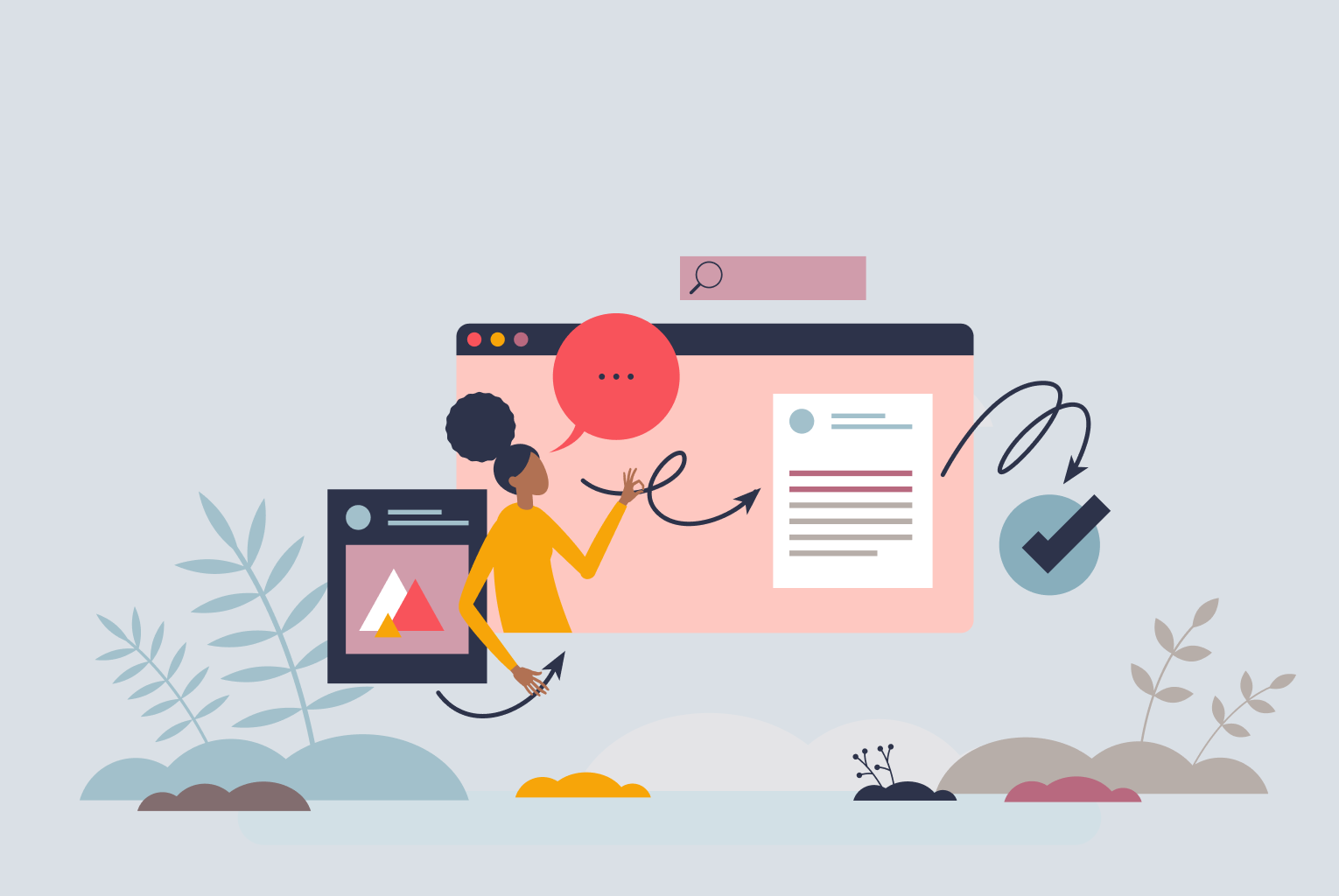
What is a Proof of Concept (PoC)?
A proof of concept (PoC) is a small-scale experiment or test used to determine whether a concept or idea is technically feasible. It’s not meant to be a complete product or even a working model; instead, it’s a simple demonstration that proves a concept can work.
In the context of business development, a PoC helps determine whether an idea is viable before committing resources to full development. It’s about reducing risk and validating assumptions early on.
For example, if you're developing a machine learning tool that analyzes social media sentiment, your PoC might be a script that processes a small dataset to demonstrate that your algorithm actually works.
Businesses often use PoCs during the ideation or early planning phase. It helps decision-makers determine if it's worth investing more time, money, or technical resources into building a full prototype or MVP.
Key Elements of a Proof of Concept
Several elements define a successful PoC, especially in the context of concept validation for businesses:

- Objective clarity: Clearly defined questions the PoC needs to answer (e.g., Can this be built? Will it integrate with X system?).
- Focused scope: Limited in scale and complexity to ensure it remains a fast, low-cost experiment.
- Technical feasibility: Tests whether the idea is technically achievable using available tools, frameworks, or platforms.
- Validation metrics: Criteria that determine whether the PoC was successful (e.g., performance benchmarks, API response rates, etc.).
A PoC doesn't need to be pretty. It doesn’t even need a UI. It just needs to work enough to confirm the technical hypothesis and build stakeholder confidence.
When to Use a Proof of Concept in Your Business Strategy
Choosing a PoC makes the most sense when your business is in the earliest stages of development, and you're trying to figure out whether your idea can work in the real world.
Common scenarios include:
- Early-stage startups testing the viability of new tech
- Enterprise innovation teams exploring integration with legacy systems
- Product teams pitching new concepts internally or to investors
In each of these cases, a PoC is about proving that something can be done. It’s not about showing how it will look or function in detail; that’s what prototypes are for.
When resource conservation is critical and risk is high, a PoC offers a low-cost way to validate your core assumptions.
What is a Prototype?
A prototype is an early, working model of a product used to test its functionality, design, and user experience. Unlike a PoC, which is focused on feasibility, a prototype is focused on usability and interaction.
Think of it this way: a PoC shows that something can work; a prototype shows how it will work in real life.
In most product development workflows, prototyping follows PoC. Once feasibility is proven, businesses move on to building something users can touch, see, or interact with.
The Role of Prototypes in Product Development
In the prototype vs PoC discussion, the prototype clearly shines in later stages of the development cycle. It plays a crucial role in:
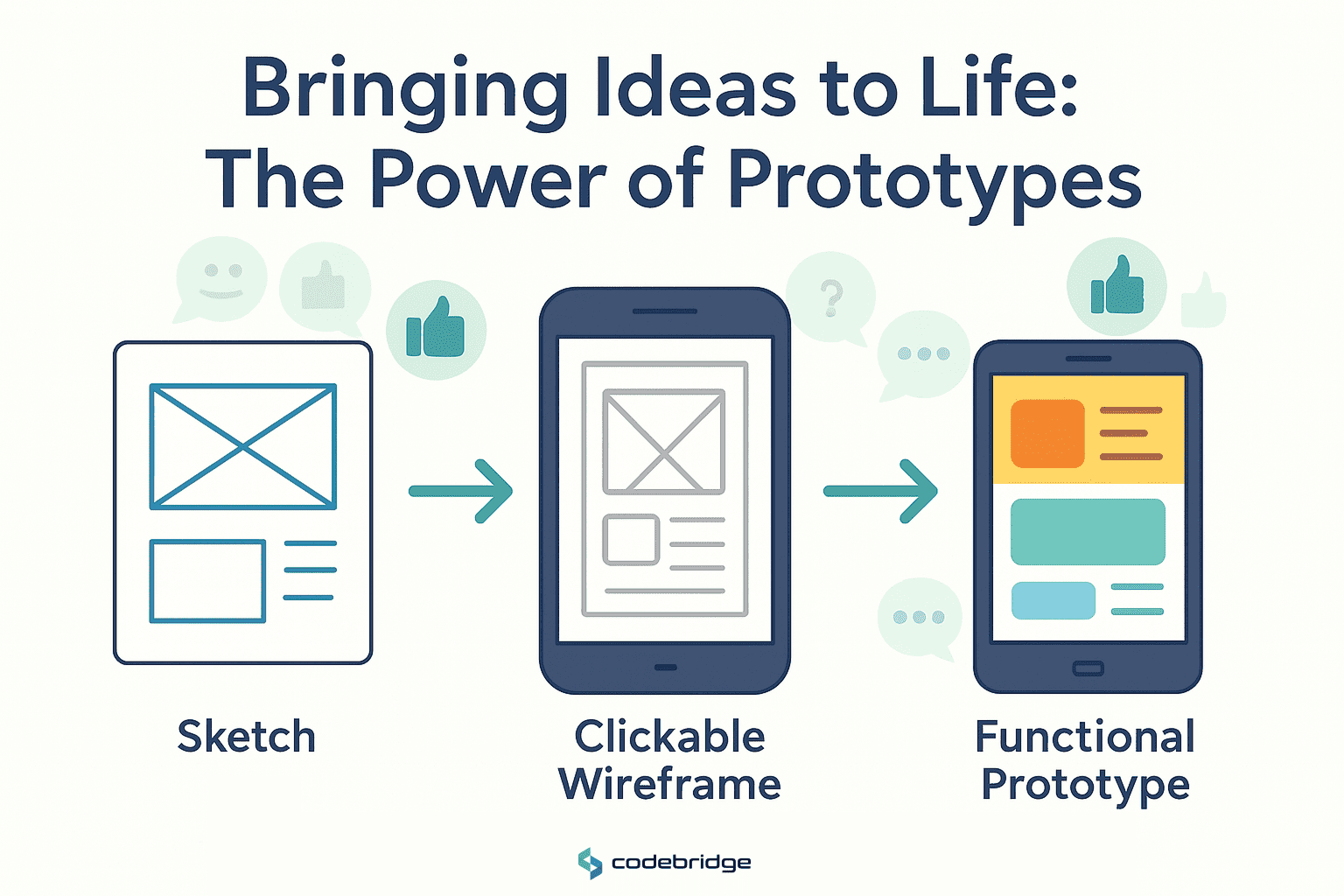
- Design validation: Helps stakeholders visualize the user journey, UI elements, and interaction flow.
- User feedback: Enables early testing with users to gather input on functionality and design.
- Iteration: Helps teams quickly refine and evolve the product before building the final version.
Prototypes can range from paper sketches and clickable wireframes to fully functional app simulations using tools like Figma, Adobe, or even Flutter for functional prototypes.
The ultimate goal? Create something tangible that helps stakeholders understand the product vision and users test the experience.
Why Prototypes Are Essential for Testing User Experience
UX testing is one of the core reasons companies develop prototypes. After all, you can have a technically viable product (thanks to a PoC), but if users hate the interface or find it confusing, it won’t succeed.
Choosing a prototype for your business allows you to:
- Spot usability issues early on
- Test feature prioritization with real users
- Refine navigation, layout, and interactions before development
- Align stakeholders on visual direction and design consistency
In short, a prototype helps ensure your product isn’t just possible, it’s also delightful to use.
Proof of Concept vs Prototype: Key Differences
Understanding the fundamental differences between a proof of concept vs prototype is essential for business leaders who want to avoid misaligned expectations, wasted time, or development bottlenecks. While both are important in the product development lifecycle, they serve very different purposes and are used at different stages.
The Purpose of PoC in Validating Ideas vs Prototypes for User Testing
The proof of concept (PoC) is all about internal validation. It’s used to verify whether a particular technical function or integration is feasible. PoCs often focus on a single aspect of a larger project, such as verifying whether an API connection is possible or whether an algorithm can analyze specific types of data.
In contrast, prototypes aim to simulate how users will interact with a product. While a PoC might only be seen by developers and internal stakeholders, a prototype is often shown to testers, potential users, and investors.
PoC is for validation of capability;
Prototype is for validation of experience.
Resources and Time Investment in PoC vs Prototypes
Another key difference between a PoC and prototype lies in the amount of time and resources required.
- PoCs are generally faster to build and cheaper. They're often put together in a few days to a couple of weeks and are built by engineers or technical leads.
- Prototypes, depending on their fidelity, can take longer. A high-fidelity prototype may involve UX designers, front-end developers, and even early backend integration. It’s more polished and may look very similar to the final product.

When to Choose a Proof of Concept vs a Prototype for Your Business
Choosing between a proof of concept vs prototype depends on your startup’s current goals. Are you validating whether an idea is possible? Or are you testing how well it works in the hands of users?
Using PoC for Feasibility Studies and Early Validation
If your idea relies on untested technology, or if there’s uncertainty about technical integration, concept validation for businesses should start with a PoC.
Scenarios for using a PoC include:
- Testing a new machine learning model with a specific data type
- Verifying performance of a new blockchain protocol
- Demonstrating a new integration between two platforms or systems
- Evaluating sensor accuracy in IoT solutions
In all of these, the focus is on “Can we build this?” not “Will users like this?”
Once the PoC is successful, you can move confidently into building a prototype or MVP.
Choosing Prototypes for Designing and Refining User Interfaces
Once feasibility is established or not in question, prototypes become invaluable, especially when UI/UX plays a major role in product success.
Prototypes are ideal for:
- Designing and validating UI/UX flows
- Conducting A/B testing with design variations
- Presenting a visual concept to stakeholders or investors
- Testing product-market fit in a sandbox environment
Benefits of prototype and proof of concept differ by use case, but combining both over the course of product development ensures that both technical and user experience assumptions are validated.
Prototypes make your vision tangible. They help your team and your users see, click, and feel the product before a single line of production code is written.
Benefits of Proof of Concept and Prototypes for Your Business
Implementing both a PoC and prototype strategy can dramatically improve the quality and efficiency of your product development. These approaches help manage risk, prioritize resources, and boost stakeholder confidence.
Risk Reduction and Resource Allocation with PoC
A well-executed PoC can save your business months of development time and thousands in costs by revealing technical blockers early. It also helps justify investment by proving your idea is grounded in technical reality.
Benefits include:
- Lower risk of technical failure
- Informed budgeting and planning
- Easier stakeholder buy-in
- Greater developer clarity and confidence
By using a PoC to verify the foundation of your product, you prevent costly rewrites and missed deadlines down the road.
How Prototypes Improve Product Design and User Acceptance
Prototypes, on the other hand, focus on user satisfaction and engagement. A good prototype helps ensure your final product is aligned with user needs and expectations.
Benefits of prototyping include:
- Early UX testing without full development
- Rapid iteration on ideas and layouts
- Visual communication for non-technical stakeholders
- Improved product-market fit
Prototypes also help spot issues that don’t show up in technical testing, like confusing layouts, lack of accessibility, or misaligned design assumptions.
By integrating user feedback early, you build a product that people actually want to use.

Common Pitfalls to Avoid When Using PoC and Prototypes
While both proof of concept (PoC) and prototypes offer invaluable insights and risk reduction, they can also lead to setbacks if not executed properly. Misuse or misalignment of these tools can cost startups precious time, money, and momentum.
Understanding the common mistakes in the proof of concept vs prototype process ensures your business gets the most out of each phase of development.
Avoiding Overengineering in Prototypes
One of the most frequent issues with prototypes is overengineering, spending too much time polishing the prototype as if it were the final product. This mistake eats into your development timeline and diverts resources from actual product building.
Here’s how to avoid overengineering:
- Stick to goals: Remember, prototypes are for testing, not launching.
- Limit features: Focus only on the core functionality that needs validation.
- Use low-code/no-code tools: Tools like Figma, Sketch, or InVision can simulate user flows without heavy backend development.
Avoid perfectionism. The goal is to learn fast, iterate faster, and fail forward if necessary. By embracing imperfection in your prototypes, you gain real insights without the cost of full development.
Ensuring Accurate Validation with PoC
When it comes to PoCs, the biggest risk is invalid or misleading conclusions. This usually happens when:
- The PoC doesn't represent realistic conditions
- The scope is too narrow or too broad
- Stakeholders misunderstand what success means
To ensure your PoC delivers accurate validation:
- Define clear success metrics: Set measurable goals before starting the PoC.
- Simulate real conditions: Include realistic data, stress levels, and environments.
- Document everything: Record findings, limitations, and decisions so that your team can refer back as the project scales.
Remember: A PoC is not about proving everything. It’s about proving something critical and using that proof to move forward with confidence.
Final Thoughts: Choosing the Right Approach for Your Business Development
When navigating the proof of concept vs prototype decision, there’s no one-size-fits-all answer. The best approach depends on your goals, product stage, and available resources.
If you're exploring whether a new idea is technically feasible or integrating untested tech, start with a PoC. It will help you avoid investing heavily in an idea that isn’t even buildable.
If your idea is technically sound, but you need to validate how it works for users, or pitch the vision to stakeholders, a prototype is your best bet. It gives form and function to your ideas and opens the door to meaningful feedback and iterations.
Many successful companies use both in tandem, starting with a PoC for internal validation, then transitioning to a prototype for design refinement and user testing.
Ultimately, choosing wisely between a PoC and a prototype means saving time, reducing risk, and launching with greater confidence. Book a free strategy session to discuss the right approach for your startup.
FAQ
What is the main difference between a proof of concept and a prototype?
A proof of concept (POC) tests whether an idea is technically feasible, while a prototype demonstrates how the product will look and function. A POC focuses on validating assumptions, and a prototype focuses on user experience and design. Understanding this difference helps businesses decide which approach aligns with their goals.
When should a business choose a proof of concept instead of a prototype?
A business should choose a proof of concept when it needs to confirm that a new technology, feature, or integration is possible. POCs are ideal for early-stage idea validation before investing in full development. This approach reduces risk by identifying technical limitations and feasibility upfront.
When is a prototype more beneficial than a proof of concept?
A prototype is more beneficial when a business wants to visualize the product’s design, test the user interface, or gather feedback from stakeholders and potential customers. Prototypes help refine usability, improve user experience, and shape the final product before investing in development.
How do proof of concept and prototype contribute to product development?
Both approaches play essential roles in product development. A POC validates technology, ensuring the idea can be built, while a prototype validates functionality, showing how the product will work. Together, they help businesses reduce risks, optimize resources, and build stronger products with confidence.
What are the benefits of starting with a proof of concept for innovative ideas?
Starting with a POC helps businesses avoid costly mistakes by testing the core technical assumptions early. It provides clarity on feasibility, performance requirements, and potential challenges. For innovative or complex ideas, a POC becomes a strategic tool that supports smarter decision-making and investment planning.
How can a prototype help attract customers or investors?
A prototype gives customers and investors a tangible preview of the product, making it easier to communicate the vision. It demonstrates functionality, user flow, and value, helping stakeholders understand the product’s potential. A well-designed prototype increases trust, accelerates buy-in, and strengthens funding opportunities.
Heading 1
Heading 2
Heading 3
Heading 4
Heading 5
Heading 6
Lorem ipsum dolor sit amet, consectetur adipiscing elit, sed do eiusmod tempor incididunt ut labore et dolore magna aliqua. Ut enim ad minim veniam, quis nostrud exercitation ullamco laboris nisi ut aliquip ex ea commodo consequat. Duis aute irure dolor in reprehenderit in voluptate velit esse cillum dolore eu fugiat nulla pariatur.
Block quote
Ordered list
- Item 1
- Item 2
- Item 3
Unordered list
- Item A
- Item B
- Item C
Bold text
Emphasis
Superscript
Subscript







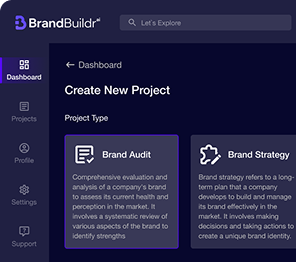
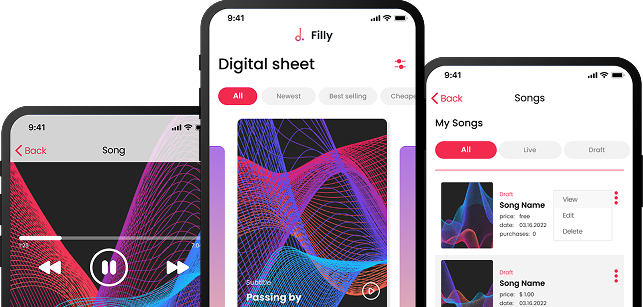










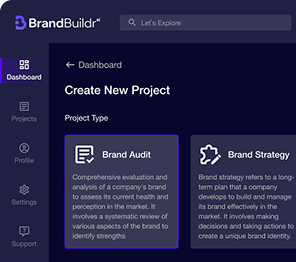

.avif)



.avif)

.avif)


